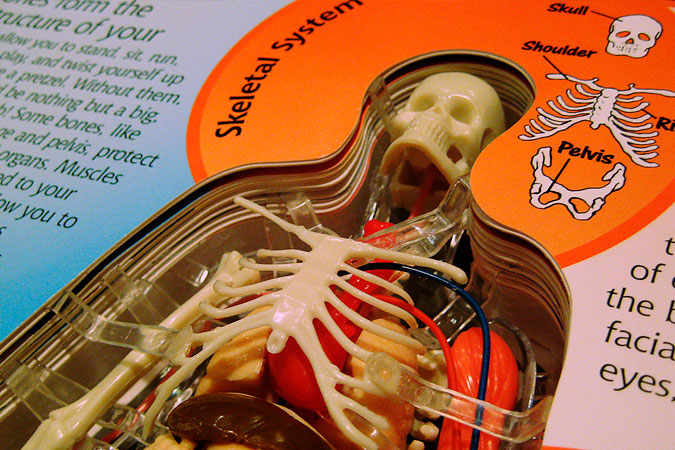Understanding the Skeletal System: The Framework of the Body
This detailed article provides an in-depth overview of the human skeletal system, a crucial part of human anatomy. It explains the division of the skeletal system into two main components: the axial skeleton, which forms the body’s central structure, and the appendicular skeleton, including the limbs and the girdles. The article delves into the specifics of each section, detailing the bones and their functions within the skull, vertebral column, rib cage, and sternum of the axial skeleton, and the upper and lower limbs, and the pelvic and pectoral girdles of the appendicular skeleton. It also highlights the essential roles the skeletal system plays in our bodies, from providing support and enabling movement to protecting vital organs and aiding in the production of blood cells. This article is an essential read for individuals studying human anatomy, healthcare professionals, athletes, trainers, or anyone interested in understanding the human body’s structural framework.

Skeletal System
The human skeletal system, a structural network of bones and cartilage, plays several critical roles in our bodies. It provides support, enables movement, protects our organs, produces blood cells, and acts as a storage system for minerals like calcium. This complex system can be categorized into two primary components: the axial skeleton and the appendicular skeleton.
Axial Skeleton
The axial skeleton forms the central axis of the human body. It consists of 80 bones and includes:
- Skull (Cranium): The skull, comprised of 22 bones, serves as a protective case for the brain and supports the structures of the face. The skull includes the cranial bones, which encase the brain, and the facial bones, which form our face’s structure.
- Vertebral Column (Spine): The vertebral column, also known as the backbone or spine, consists of 33 individual bones called vertebrae. These vertebrae are stacked one on top of the other, forming a flexible column that supports the head, encases the spinal cord, and provides attachment points for the ribs and muscles of the back and neck.
- Ribs: The rib cage is formed by 12 pairs of curved bones that protect the heart, lungs, and major blood vessels from injury. Together with the sternum, they form the thoracic cage.
- Sternum: The sternum, or breastbone, is a flat bone located in the center of the chest. It connects to the rib bones with cartilage, forming the front part of the rib cage.
Appendicular Skeleton
The appendicular skeleton consists of 126 bones and includes the limbs (appendages) and the girdles that attach them to the axial skeleton. It can be further divided into:
- Upper Limbs: Each upper limb includes the humerus of the upper arm, the radius and ulna of the forearm, the carpals of the wrist, the metacarpals of the palm, and the phalanges of the fingers.
- Lower Limbs: Each lower limb includes the femur of the thigh, the patella of the knee, the tibia and fibula of the lower leg, the tarsals of the ankle, the metatarsals of the foot, and the phalanges of the toes.
- Pelvic Girdle: The pelvic girdle, also known as the hip girdle, is formed by two coxal bones or hip bones. It connects the lower limbs to the axial skeleton.
- Pectoral Girdle: The pectoral girdle, or shoulder girdle, consists of the scapula (shoulder blade) and the clavicle (collarbone). It connects the upper limbs to the axial skeleton.

In conclusion, the skeletal system’s complexity contributes significantly to our bodies’ functioning, from movement and protection to blood cell production and mineral storage. Understanding this system is vital in fields such as healthcare, sports, and any discipline that deals with human physiology and movement.











